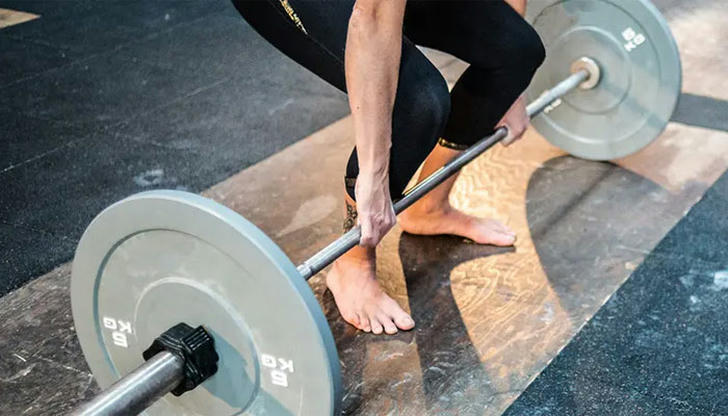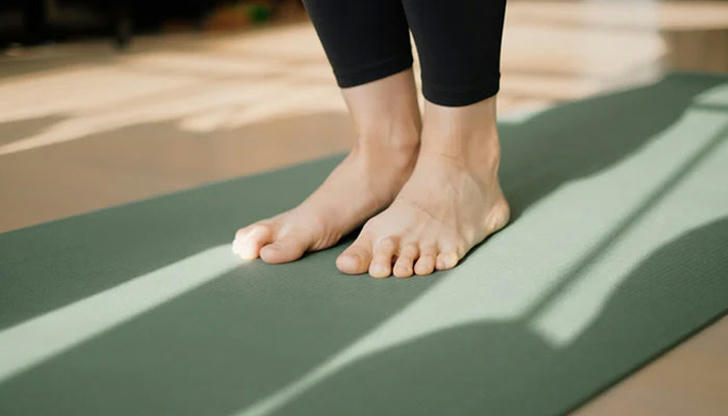Is Barefoot Training a Good Idea?
Exercising barefoot is not the most unusual thing in the world. After all, for many who practice yoga or want to do stretching exercises, it is quite common.
So, what types of exercises can be done barefoot? Can training barefoot cause injuries? Keep reading to find out.
Benefits of Barefoot Training

The top 4 benefits of barefoot training are:
• Improved foot and ankle strength
• Improved balance and stability
• Better posture and alignment
• Injury prevention
Like other parts of our body, our feet are also equipped with muscles, nerves, and joints of various sizes, with the bones in our hands and feet accounting for more than half of our body's total.
When you wear shoes, the muscles and connective tissues don't need to work very hard to stabilize your body. The shoes do a lot of the work for your feet, which can more or less cause your feet to slacken off. Over time, the feet become less capable of working effectively.
Due to long-term lack of walking, incorrect walking posture, and so on, many people's feet not only become increasingly "clumsy" but also lose their original function and strength.
These foot problems can further affect our calf shape, pelvic balance, knees, and more, increasing the risk of ankle injuries, and even knee problems.

The reason why barefoot fitness has become popular is mainly because some studies suggest that when exercising without shoes, the absence of their assistance requires the feet to exert more effort to prevent twisting (i.e., maintain ankle stability), the toes can grip the ground better, and the arches of the feet work harder.
This series of actions force our feet, which are used to being protected by shoes, to train and use their own muscles to the maximum extent, while also increasing the flexibility of various joints in the feet. In addition, barefoot training can also make your reaction time faster during workouts! After all, the nerves in your feet can feel the ground unimpeded.
Which Exercises You Should Do Barefoot

In general, strength training, yoga, Pilates, and stretching are more suitable for barefoot. Additionally, sports that involve body rotation and deep squats are also suitable for barefoot practice. However, for jumping and running, it is best to wear shoes.
Strength training requires better stability and balance of the body, as well as effective transmission of force to the ground. If you choose to wear shoes, it is advisable to select flat athletic shoes with a stiffer sole. Training barefoot can actually help the body complete its tasks more effectively while also training our feet.
The primary function of wearing shoes for jumping and running is the cushioning they provide.
Our bodies are not light. Imagine how it felt the last time you lifted something weighing 20 pounds, and our bodies weigh more than that. When you land after a jump, the force from the ground can impact your joints. Wearing shoes, especially those with cushioning, can absorb this force, reducing the impact on the knees and supporting the foot shape. Otherwise, it can be very damaging to the knees and ankles.
How to Get Started with Barefoot Training

Before you begin barefoot training, it's important to start slowly and gradually build up your foot and ankle strength. If you've been wearing traditional or supportive shoes for most of your life, your feet and ankles may not be used to the additional stress of training barefoot.
Begin by walking around your house or on a soft carpet without shoes. This will help your feet and ankles adjust to the new sensations and strengthen the muscles.
An extremely effective exercise for working out the muscles in your feet is toe raises. Stand barefoot on a flat surface with your feet shoulder-width apart. Slowly raise your toes off the ground. Hold for a few seconds, then lower your toes back to the ground. Repeat this several times.
Another effective barefoot exercise is single-leg balancing. Stand on one foot without shoes and maintain your balance for as long as possible. Once you feel comfortable, add extra challenges such as shoulder raises to further challenge your equilibrium.
